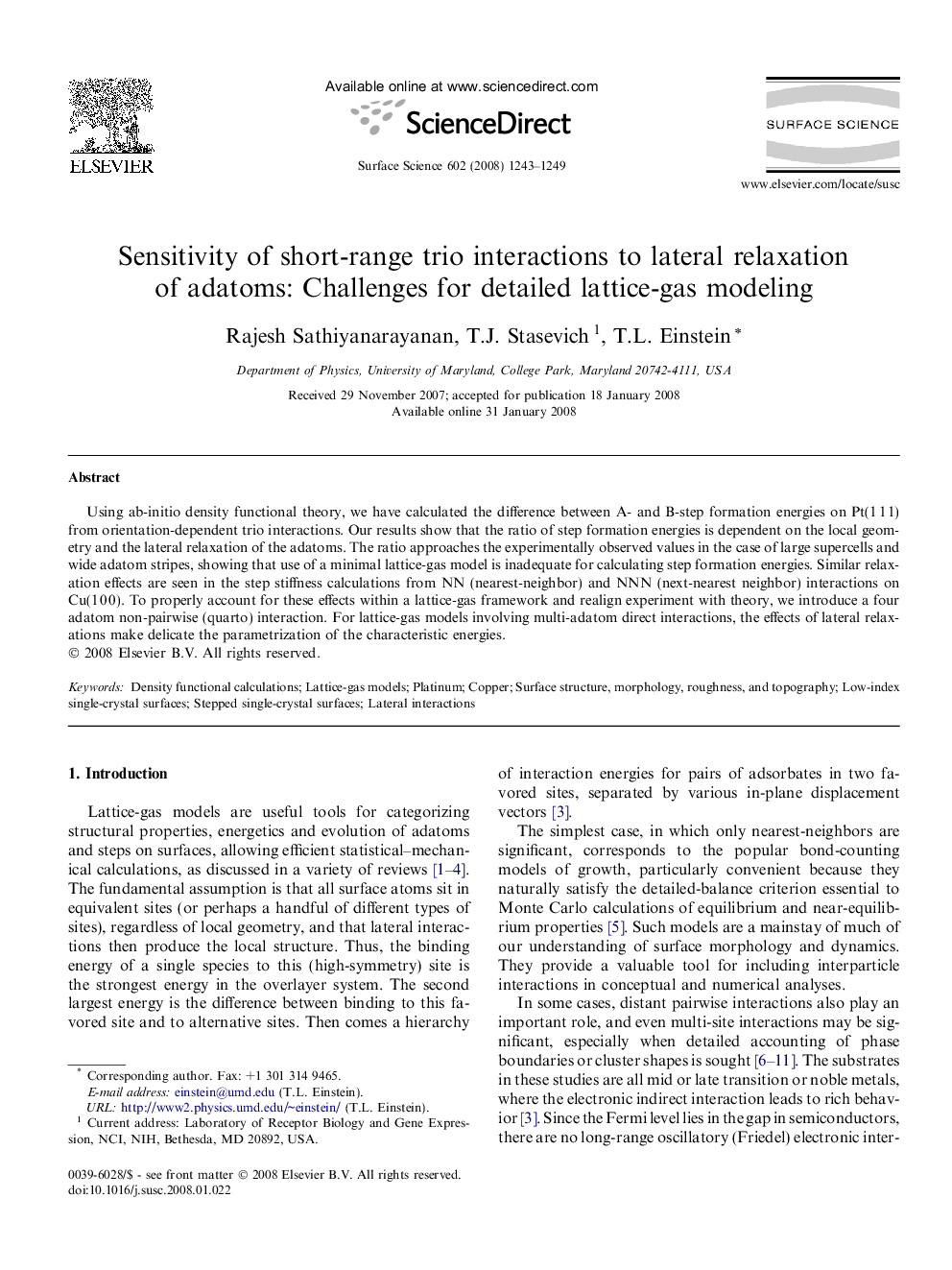| Article ID | Journal | Published Year | Pages | File Type |
|---|---|---|---|---|
| 5424974 | Surface Science | 2008 | 7 Pages |
Using ab-initio density functional theory, we have calculated the difference between A- and B-step formation energies on Pt(1Â 1Â 1) from orientation-dependent trio interactions. Our results show that the ratio of step formation energies is dependent on the local geometry and the lateral relaxation of the adatoms. The ratio approaches the experimentally observed values in the case of large supercells and wide adatom stripes, showing that use of a minimal lattice-gas model is inadequate for calculating step formation energies. Similar relaxation effects are seen in the step stiffness calculations from NN (nearest-neighbor) and NNN (next-nearest neighbor) interactions on Cu(1Â 0Â 0). To properly account for these effects within a lattice-gas framework and realign experiment with theory, we introduce a four adatom non-pairwise (quarto) interaction. For lattice-gas models involving multi-adatom direct interactions, the effects of lateral relaxations make delicate the parametrization of the characteristic energies.
